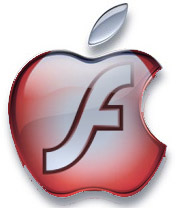Apple procrastinates, Google goes to the library and Mozilla wants you to design a phone
It's the weekly Pocket Picks round-up

Kia Ora!
There’s been so much talk recently about iPhone hardware upgrades, it seems like everyone’s forgotten about getting the current models up to speed. But the last week has seen our Pocket Picks research gnomes mine quite a bit of information about how Apple is - hopefully - finally getting to work on its browsing abilities.
The whole drama about getting Adobe’s Flash system onto the iPhone has resurfaced, though at least this time the issue seemed to be raised with the intention of putting it to bed. Apple and Adobe apparently teamed up to try and slay this irksome beast once and for all, though it’s hard to forget that it’s Apple that’s really been causing the delays all along. As much as Apple seems to want Flash, what it really wants is a ‘version’ of Flash - one that’s less likely to run non-App Store approved applications, we suspect.
But the resurgence of interest in Flash does fit with Apple’s apparent buckling on the freedom of third-party applications to run in the background. The lack of such a vital feature in these days of multitasking and bolt-on functionality is a gaping hole in the iPhone’s usability, and the latest rumours suggest it might finally be coming.
The most obvious use of background operations is functions like push email, and allowing an incoming VoIP call to launch an application, for instance - something that, to be quite honest, seems necessary if Apple wants its revolutionary handset to maintain its lead.
Of course, no sooner than we hear that Apples is keen to solve the Flash problem does it announce that it has a preferred alternative in the shape of CSS and some clever HTML coding.
The argument that Flash is too resource heavy is kind of redundant, as Adobe long since addressed that issue, but there are some very decent animations and effects possible through Apple’s proposed alternative, as Pocket Picks demonstrates.
But at the last count, around 98 per cent of desktop computers already have Flash installed, so expecting websites to change their operation at this late stage in the game just so Apple can maintain a tighter grip on iPhone applications is a long shot at best.
If all this web-based techno talk is stressing you out, it’s good to know that Google’s ready to step in and give you the iPhone respite you need.
A new application has been made available for both the iPhone and Android powered handsets that allows you to access Google’s Book Search site. This impressive database contains around half a million digitised public domain books, presented in easy to access web browser pages.
As much as we’ve now got a dedicated application, it actually means any web browser can hit the virtual library shelves, so if you’re looking to get your nose in a new novel without trawling the charity shops, this could be exactly what you’re looking for.
If you’re looking for a new handset to read on, this isn’t your week, however. Very little in the way of new hardware, though there is one concept phone that’s particularly intriguing. Not so much because of the glamorous, unrealistic features most concept phones promise, but because of its unusual development procedure.
The guys over at Mozilla (who gave us the FireFox browser) are running a crowdsourcing project to figure out exactly what the net-surfing public would want from a possible Mozilla phone.
Feature ideas and refinements are being added to the ‘Mozphone’ every day, and although any possibility of the hardware appearing is a long way off, there’s no denying the ingeniousness of its collaborative design.
Just think how proud you’d be if one of your features actually did make it onto a handset in 2020. Quite splendid, I’d imagine (though you wouldn’t be getting a share of the profits, obviously).
Kia Ora!
